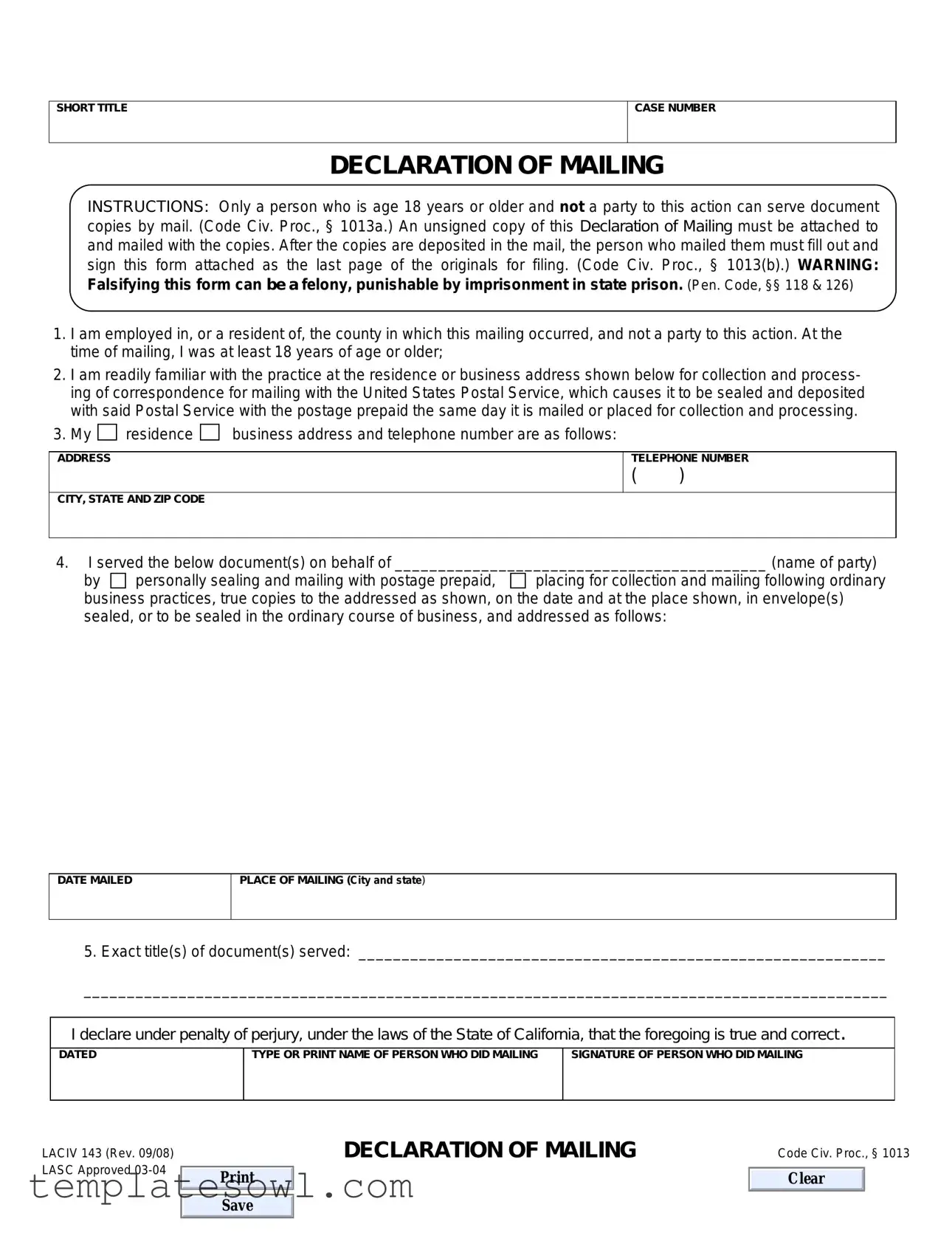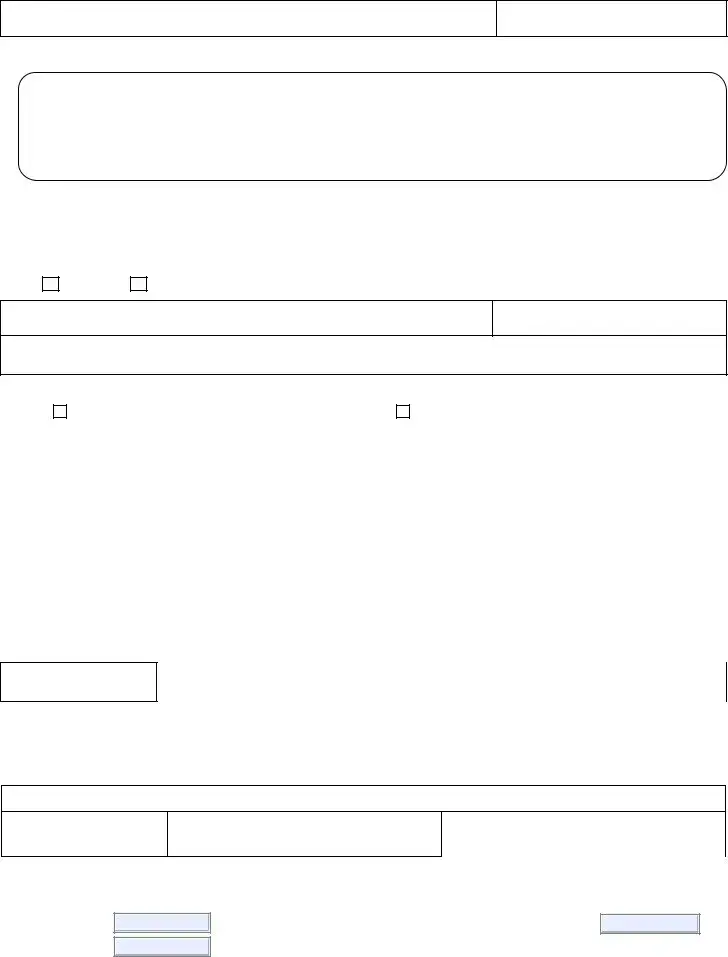What is the Declaration of Mailing form used for?
The Declaration of Mailing form serves as proof that certain legal documents have been sent through the mail. It is particularly important in legal and court matters, ensuring all parties are duly notified. This form helps maintain transparency in the process of document delivery, especially when dealing with legal proceedings.
Who is eligible to complete the Declaration of Mailing form?
A person must meet several criteria to complete this form. They must be at least 18 years old, not involved in the legal case (not a party), and either reside in or be employed in the county where the mailing takes place. This ensures that the individual is both capable and qualified to serve the document copies.
What documents need to be attached to the Declaration of Mailing?
Every Declaration of Mailing must include a signed copy of the form itself, attached to the copies of documents sent. This provides a record of what was mailed and confirms adherence to the mailing rules.
What specific information is required on the Declaration of Mailing form?
Key details needed on the form include the case number, the party on whose behalf the documents are being sent, the address of the sender, and the titles of the documents served. Additionally, the date of mailing and the location from which it was mailed should be included. This thoroughness helps in verifying the mailing process.
What happens if someone falsifies information on the Declaration of Mailing?
Falsifying information on this form is a serious offense. It can result in felony charges, potentially leading to imprisonment. The legal system takes such actions seriously, as accurate mailing records are crucial for fair and transparent proceedings.
Why is it important to mail documents following ordinary business practices?
Mailing documents according to standard business practices ensures that they are handled appropriately, increasing the likelihood they will arrive promptly and in good condition. Following these practices also provides a defense that the mailings were made in good faith, which can be important in legal contexts.
What does it mean to declare under penalty of perjury?
Declaring under penalty of perjury means that the person signing the declaration affirms that the information provided is truthful. If it turns out to be false, the signer can face legal consequences. This declaration underscores the importance of honesty in all legal matters.
How do I complete the Declaration of Mailing form?
Start by filling out all required fields on the form, including your personal information and details about the mailing. Make sure to attach an unsigned copy of the form to the documents being mailed. After mailing, sign the form and ensure it is correctly filed. It is crucial to double-check all information before submission to avoid potential issues.
Where can I get a Declaration of Mailing form?
Copies of the Declaration of Mailing form can typically be obtained from the court's website or the local courthouse. Ensure you are using the most current version of the form to comply with legal requirements, as they may be updated periodically.

